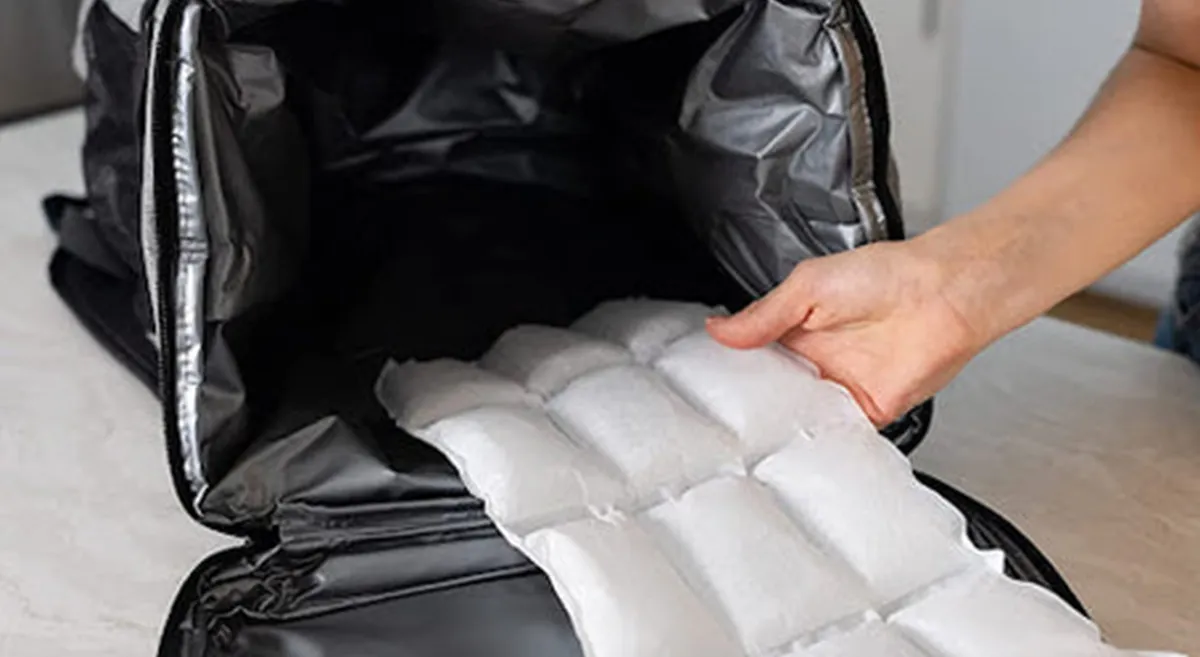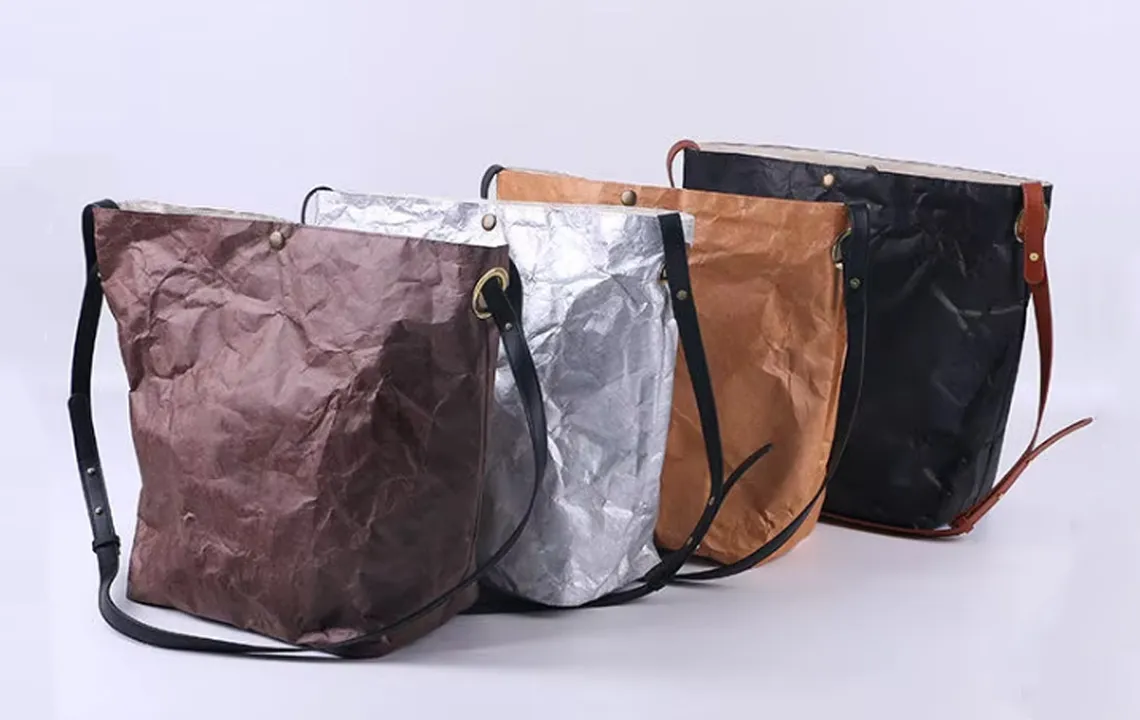Dry ice is a popular choice for keeping food and beverages extremely cold during transport. Many businesses and individuals ask can you put dry ice in a cooler bag. The answer is yes, but it requires careful attention to materials, ventilation, and safety precautions. In this guide, we explain the science behind dry ice, how to use it safely in cooler bags, and best practices to maximize effectiveness while protecting your cooler bag and your health.

Understanding Dry Ice and Its Properties
Dry ice is solid carbon dioxide (CO₂), with a temperature of about −78.5°C (−109.3°F). Unlike regular ice, it sublimates, meaning it turns directly from a solid into gas without becoming liquid. This unique property makes it ideal for keeping items extremely cold without adding water.
Common uses of dry ice include:
- Transporting frozen foods and seafood
- Cooling drinks or desserts for parties and events
- Preserving biological samples or medical supplies
- Scientific experiments and special effects
Because dry ice releases carbon dioxide gas as it sublimates, proper ventilation is critical to prevent pressure buildup.
Can You Put Dry Ice in a Cooler Bag?

Yes, you can use dry ice in a cooler bag, but not all cooler bags are suitable. The extreme cold can damage thin materials, reduce insulation efficiency, or harm structural components.
Cooler Bag Material Considerations
Here is a practical reference for cooler bag compatibility with dry ice:
| Material | Suitable for Dry Ice? | Notes / Tips |
|---|---|---|
| Polyester | Limited | Can handle short-term use; avoid direct contact with dry ice |
| Nylon | Limited | Durable exterior, may stiffen in extreme cold |
| Canvas | Not recommended | Material may crack or warp with direct dry ice contact |
| PEVA / Aluminum Lining | Yes | Can handle dry ice; use barrier to prevent scratching or freezing food directly |
| Insulated Foam | Limited | Protects food, but prolonged exposure may damage insulation |
Only sturdy, insulated cooler bags should be used with dry ice. Use barriers like cardboard or towels to separate dry ice from food and the bag’s lining. Ventilation is also essential to safely release CO₂ gas.
Size and Ventilation Requirements
Cooler bags must have sufficient volume to allow airflow around the dry ice. Never fully seal a bag with dry ice inside. Gas buildup can create dangerous pressure, potentially causing the bag to rupture. Consider bags with vented compartments or partially open zippers during transport.
Safety Tips for Using Dry Ice in Cooler Bags
- Wear gloves and protective eyewear when handling dry ice.
- Never allow dry ice to contact skin directly. It can cause frostbite.
- Keep the bag partially open or vented to release CO₂ safely.
- Keep dry ice away from children and pets.
- Avoid transporting dry ice in enclosed passenger compartments without ventilation.
Best Practices for Using Dry Ice in Cooler Bags
- Layering: Place a barrier such as cardboard, a towel, or a tray between dry ice and food to prevent freezing damage.
- Containers: Use rigid trays or containers to hold dry ice securely.
- Vent gases safely: Keep the bag partially open to prevent pressure buildup.
- Transport duration: Dry ice sublimates faster in warmer temperatures; plan transport or storage time accordingly.
Here is a table summarizing the best practices and common mistakes when using dry ice in cooler bags:
| Step / Practice | How to Do It | Common Mistakes to Avoid |
|---|---|---|
| Preparing the Bag | Ensure bag is clean and sturdy | Using thin or damaged bags |
| Handling Dry Ice | Wear gloves and goggles | Touching with bare hands |
| Layering | Use barrier between ice and food | Direct contact with bag lining or food |
| Ventilation | Keep zippers partially open | Sealing bag completely |
| Loading | Place items evenly around dry ice | Overfilling, which restricts airflow |
| Transport | Keep bag upright in ventilated area | Leaving bag in confined, unventilated space |
| Disposal | Let leftover dry ice sublimate in a ventilated area | Pouring dry ice into sinks or enclosed areas |
Following these practices ensures safe use of dry ice without damaging your cooler bag or risking safety hazards.
Cleaning and Maintenance After Dry Ice Use
After using dry ice in a cooler bag, proper cleaning and maintenance are essential:
- Remove any remaining dry ice and allow condensation to evaporate.
- Wipe the interior with warm water and mild detergent.
- Inspect seams, lining, and insulation for cracks or damage caused by extreme cold.
- Air dry completely before storing the bag.
Regular cleaning ensures the cooler bag remains safe for transporting both hot and cold foods in the future.
Common Mistakes to Avoid
- Overfilling the cooler bag with dry ice, which can create uneven cooling or pressure buildup.
- Sealing the cooler bag completely, leading to gas accumulation and risk of rupture.
- Using cooler bags made from thin or non-insulated materials.
- Transporting dry ice in unventilated spaces, such as the passenger compartment of a car.
- Ignoring the sublimation rate of dry ice, which can result in insufficient cooling.
Conclusion
You can put dry ice in a cooler bag, but only with the right materials, ventilation, and careful handling. Using gloves, protective gear, and proper layering techniques ensures safe transport while protecting your cooler bag and food.
For businesses needing custom cooler bags designed for dry ice transport, we provide high-strength, insulated bags that withstand extreme cold and repeated use. Our bags are ideal for food delivery, catering, medical transport, and promotional purposes. Contact us today to explore bulk orders, branding options, and durable materials built for professional use.
FAQ
Can you put dry ice in any cooler bag
No. Only sturdy, insulated cooler bags suitable for extreme cold should be used. Check the manufacturer’s instructions.
How long does dry ice keep food frozen in a cooler bag
Depending on insulation and quantity, dry ice can maintain freezing conditions for 12–24 hours. Thick insulation and proper placement extend duration.
Can dry ice damage a cooler bag
Yes, direct contact with thin materials or prolonged exposure can warp linings and damage foam insulation. Always use barriers and monitor exposure.
How to safely dispose of leftover dry ice
Allow it to sublimate in a well-ventilated area. Never pour dry ice into sinks, toilets, or confined spaces.
Is it safe to transport dry ice in a cooler bag with food
Yes, as long as proper precautions are taken: use vented bags, barriers, and avoid direct contact with food.





